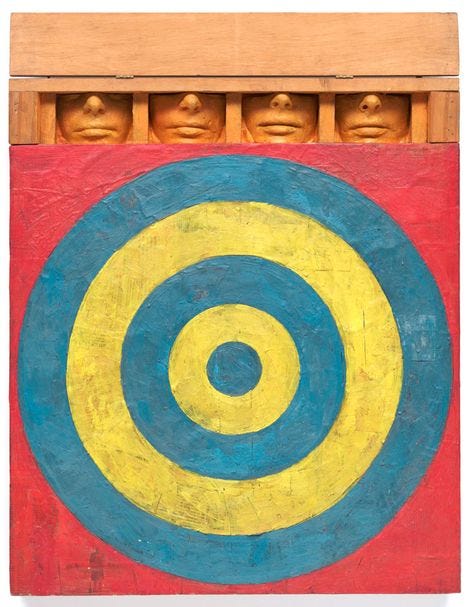Books flop.
Blood Meridian got remaindered after only selling 1,883 copies.
The Sound and the Fury sold only 3,300 copies between 1929 and 1944. Then it went out of print for a few years.
Dubliners only sold 499 copies in its first year.
There are critical failures, like that of The Grapes of Wrath, which was called “a pack of lies” by The Associated Farmers of California, and “Communist propaganda” by people on both sides of the political spectrum. (Note: The notoriety of this novel helped sell half a million copies in 1939.)
Then there are the books that endured one rejection after another:
Dubliners, (22), A Wrinkle in Time, (26), Dune, (30), Zen and the Art of Motorcycle Maintenance, (120).
The list of titles that fall into these three predicaments is very long and can be surprising. And incidentally, rejections nowadays are nothing like those you might have received in the past. Here’s one from 1928:
So, what conclusion can we draw from the fact that all these books are now considered classics? Need advice about publishing?
The internet is rife with people giving you theirs. (I’m not one of these, just so you know.) One site, belonging to Kimberly Grabas, states:
“…Another mistake that many authors make, especially fiction authors, is failing to identify their target audience before writing the book. I know it messes with the creative process for some, but it certainly can’t hurt to have a picture in your mind of who you are writing for as you craft your novel. In fact, it can make things easier by helping to clarify the purpose of your book, keep you on track and even motivate you to finish. Both fiction and non-fiction writers need to write with their target audience in mind.”
Writers are told they will never sell a thing if they don’t know who their audience is, and that they need at least to think about their:
Probable age
Probable sex
Probable education
Probable economic status
Probable social position
Probable values
Probable assumptions
I went on Twitter and did a poll. You might say that this is not very conclusive because the data sets are minuscule, but it does reflect familiar attitudes.
I once worked for a perfumer who summed it up neatly. When designing a perfume, you don’t start with the creative inspiration, the vibe, the concept, the name or anything like this. You begin with how much you want to pay per unit for manufacturing, marketing, the packaging, the graphic design, the bottle design, the labels, then how many ingredients in the perfume itself, their quality and quantity.
You understand, the poets of the world mostly all went to work for marketing firms and ad agencies. Perfumery has romance, a mystique. You imagine ultra-rich, eccentric, temperamental designers, strolling in exotic gardens with their scary-looking staff of production managers who graduated from the Harvard Business School, and speak five languages, etc. but that’s sort of a cliche. I suppose the oldest European houses and a few stateside fit this profile, but nowadays, the only magic you need resides in laboratories, and there are so many thousands of perfumes that are mechanistically churned out. Need a name? Ask Chat GPT.
So which are you? The ultra-poor, highly eccentric, raw-doggin’-it novelist, doing their own thing and damn Capitalism? Or are you down in the lab with Dracula and his crew, shrewdly making notes from Publishers Weekly?
Either way, all aboard for fun time.
What, you thought I was going to provide the answer to the audience question? Mais, non! It’s your opinion I’m after. What is your experience?
And if it so please you, Sir or Madame, would you leave us a like or a re-stack? I am forever your servant. Many thanks and good day to you.








Great article! I personally think that considering your audience before starting the writing process is important when embarking on a novel. People don’t have the time to read stuff that is not specifically geared to them. If you’re creative enough and a good writer, there’s no reason you can’t imagine something wonderful that fits any age/demographic/interest!
Such an enjoyable read, so stimulating.
I find myself inclining to the view that the writer's role is to let the story bring itself out... Dubliners, The Grapes of Wrath, Zen and the Art of Motorcycle... three of your mentions that I recall reading, and I recall sensing that the story (or the 15 stories in the case of Dubliners) was less a pre-designed and much more a liberated-in-the-writing creation.
Of course, as George Saunders has demonstrated so well in his posts over in Story Club, the writing emerges through what seems akin to a iron forging process, which is to say the iterative cycling from first drafting to reviewing, to marking-up for revising, to redrafting.
Of course also, there is no single 'best' way to bring a story out onto its pages and ready to be pushed forward in a bid for publication. When I ran courses, for example, one run I'd lead with theory and follow-up with practice; next run I'd go at it vice versa; always with some changes to what seems to get labelled 'content' these days (utter tech speak, IMHO).
As always thanks for posting Camilla.